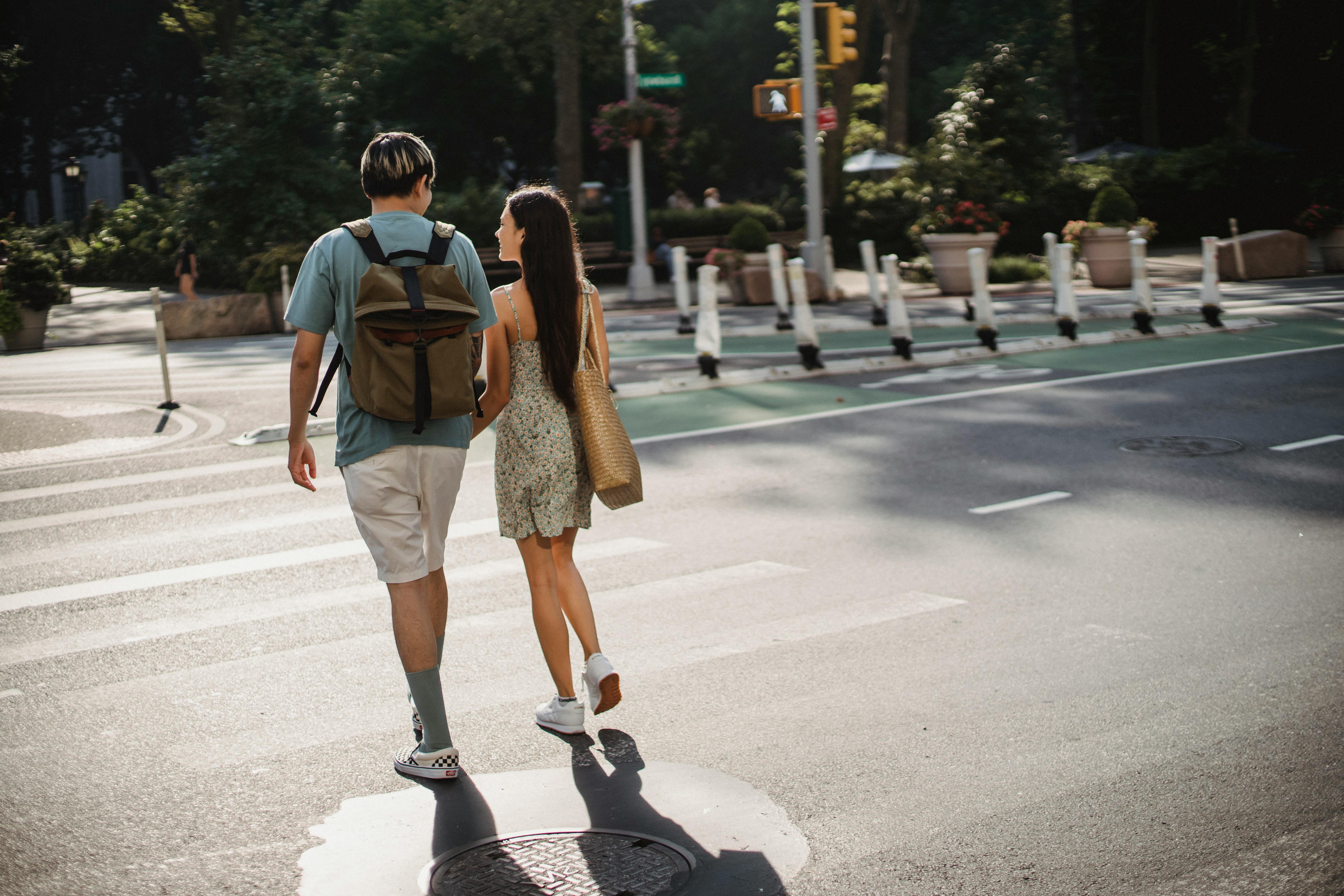Peru Adventures – Choquequirao to Machu Picchu Trek
Due to current restrictions on the number of hikers on the Classic Inca Trail to Machu Picchu, several new treks have been offered in recent years. One of the most common is the Salkantay route, which is usually a four or five day hike to Machu Picchu. Another trek that has become popular recently is the trek to Choquequirao, another set of Inca ruins that, like Machu Picchu, are located in the high jungle and have been covered with vegetation, and are now being excavated and restored. This is also normally a four or five day trek, usually done with animal support, and is a round trip on the same trail.
Because most people who hike in the Cusco area want to see Machu Picchu, there is now the option to continue from Choquequirao on a combination of other trails to Machu Picchu. This route uses small trails, some Inca trails and some little-traveled roads, part of which are the same as the Salkantay route. It is normally advertised as a seven to eight day trek and is usually offered with the support of pack animals. The advantages of these new routes is that from now (2008) there are no restrictions on the number of hikers and it is possible to do them on your own, without being part of a tourist group with an official guide. Don’t let the lack of restrictions on the number of hikers scare you, there are comparatively few tourists on the trails; it just means that if you are planning last minute and the regular quota of the Inca Trail is full, you can easily hike one of the alternative trails without any problem. The first part to Choquequirao is more used, we saw around 25-30 people (tourists, guides and locals) in total on the road in that section.
To start the walk, it is necessary to reach Cachora. Most tour agency groups leave Cusco around 4:00 am, either by public bus or private transportation. If you are traveling alone, you can leave at a more reasonable time. There are several different bus companies that have buses going in the right direction, but none of them go to Cachora. You need to take a bus that goes to Abancay (which usually goes to Lima as well). Sanchez and Wari are two of the companies, Bredde and Chankas are two more (if I have the spelling correct). They leave from the Terminal Terrestre, which is a 3 or 3.50 soles taxi ride from the downtown plaza. Most of the buses leave early in the morning, we chose Wari because they had one that left at 1:00 pm, which worked perfectly for us.
We had to pay a ticket to Abancay, which cost 15 soles, even though we got off earlier. We were told to get off at Saihuite, however that is NOT the correct place to get off. The gravel road to Cachora is just past Saihuite, maybe half a mile or so. The road is to the right, and there is a sign that says Cachora. It takes about 3 ½ or 4 hours to get there. There are usually taxis waiting there and you need to negotiate a deal with one of them to take you to Cachora, which is about 30 minutes away. An “express” taxi, which means they only take your group, costs between 30 and 35 soles. If there are others waiting, you can share a taxi for less, I think we paid 15 soles for two people. We started with six people and picked up a couple more along the way (in a Toyota Corolla van)
The starting point is the small town of Cachora, about five hours from Cusco on the road to Abancay. From there you have a beautiful view of Nevado Salkantay as the trail descends to the Apurimac River. There is a large bridge that crosses the river and then climbs steeply to the ruins of Choquequirao, a total distance of about 29 km. There are a number of rest stops and kiosks along the way, most of which offer camping and meals. From there, the trail continues up to a pass, then descends to the Rio Blanco, with more ruins shortly before the river. After crossing the river on a log bridge, the trail climbs again, to Maizal, which has a good campsite, and then continues through the jungle on an Inca Trail to Victoria Pass. The jungle ends abruptly before the pass, shortly after which it passes through old abandoned mines and then down to the town of Yanama. Choquequirao to Yanama is about 30 km.
From Yanama, the trail follows the Yanama River through a valley, soon offering spectacular views of several snow-capped mountains and glaciers. Here is a gentle climb to the top of the valley, and then a short, steep climb to the Yanama Pass. The trail, often just a footpath, sometimes almost disappears into the grass, then descends into Totora, with more grandiose scenery if it’s not cloudy. Here are a couple of stream crossings that would probably need to be forded during the rainy season. There is now a good trail to some small hot springs below the town of Ccolpapampa and a bridge that crosses the Santa Teresa River. At this point, the trail is the same as Salkantay for the rest of the way to Machu Picchu, and it is a more substantial trail. From Yanama to the hot springs are 19.5 km.
As you get closer to La Playa, there are a number of little kiosks along the way, some of them surprisingly well stocked with drinks and food, although as before Choquequirao, the long delivery by mule makes it expensive. Here too there are more people living along the trail, and you will see some road construction signs on the other side of the river, before the trail turns into a road, about 30 minutes before La Playa. In La Playa there is electricity, camping and shops, as well as sporadic vans to Santa Teresa for those who are tired of walking.
Shortly after La Playa there is an optional route in Lucmabamba that crosses the river and goes up an ancient Inca Trail to the Llactapata Pass, where you can get a good view of Machu Picchu if the clouds are not too bad. The other route goes to Santa Teresa, where there are some hot springs and more train tracks that walk back to the hydroelectric plant. From the hot springs near Ccolpapampa to Santa Teresa it is 24.5 km. The route over the pass seems like a shortcut to the hydroelectric plant but there is a lot of unevenness so it will probably take longer, but the views are worth it. Near the plant is the start of the train service, which you can take to Machu Picchu (but it only leaves around 4:20 pm), or walk along the tracks. There are also many food and drink vendors along the tracks where the train boards.
The last nine kilometers to Aguas Calientes was actually the worst section, you follow the train tracks from the hydroelectric plant and for much of the way there are no trails, you have to walk on sleepers or crushed bedrock. This was miserable and seemed to take much longer than the two hours and fifteen minutes my watch was showing; however, despite this, we saw over a hundred people walking around, mostly Peruvian children on their end-of-year school trips.
Unless you are already acclimatized to the altitude, I recommend arriving in Cusco a couple of days before. You can walk to Saqsaywaman, Q’uenqo, and the other archaeological sites above the city. There are hundreds of steps leading up to them, so a few trips up and down will also give you a good workout. The sites are very interesting but the only way to see them during the day is to buy the “tourist ticket” which cost 122 soles in 2008. You may be able to see some of them after they officially close at 6:00 pm. to see Q’uenqo but a security guard kicked us out of Saqsaywaman. Lonely Planet strongly advises against walking up there, especially after dark, but there were still a lot of people around when we went up at 5:00 pm and we never felt any danger. However, keep your eyes and ears open and be aware of your surroundings. We walked all over the city center, including the train station and the nearby tourist market, and didn’t have any problems.
A good place to stay in Cusco is the Suecia II hostel, it is a clean and airy place, with a covered patio, run by a friendly older brother and sister, who do not speak any English. A double room costs 15 soles per person with a shared bathroom and 25 soles per person with a private bathroom. An American-style breakfast with eggs costs 6 soles, 7.50 for four eggs instead of two. They will also store your extra luggage while you walk. It’s a popular place for day-trippers to stay, and reasonably quiet, though there is some noise from music from nearby restaurants at night. It is located less than two blocks from the plaza, with Internet booths, restaurants, and laundry services, as well as tourist agencies and supply stores for walks along the street toward the plaza. They don’t have a website, but you can make reservations by phone at 51-84-239757, the address is Calle Teccecocha #465.
All information and prices were current as of November 2008.



